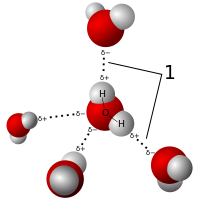
Photo from wikipedia
A mathematical model is developed considering the pyrolysis gasoline (pygas) hydrogenation kinetic, the temperature of the second-stage pygas reactor, hydrogen network integration, the variation of catalyst activity and product quality… Click to show full abstract
A mathematical model is developed considering the pyrolysis gasoline (pygas) hydrogenation kinetic, the temperature of the second-stage pygas reactor, hydrogen network integration, the variation of catalyst activity and product quality along time. The industrial data is employed to fit the linear equation about the average temperature of the second-stage reactor and operation time of catalyst. The relationship between catalyst activity and operation time is deduced, and the temperature of second-stage reactor is optimized within a certain range with the product quality requirements satisfied, as well as the economic benefit. Case study shows that this model can provide guidance for the design and improvement of pygas hydrogenation process.
Journal Title: Chemical engineering transactions
Year Published: 2018
Link to full text (if available)
Share on Social Media: Sign Up to like & get
recommendations!